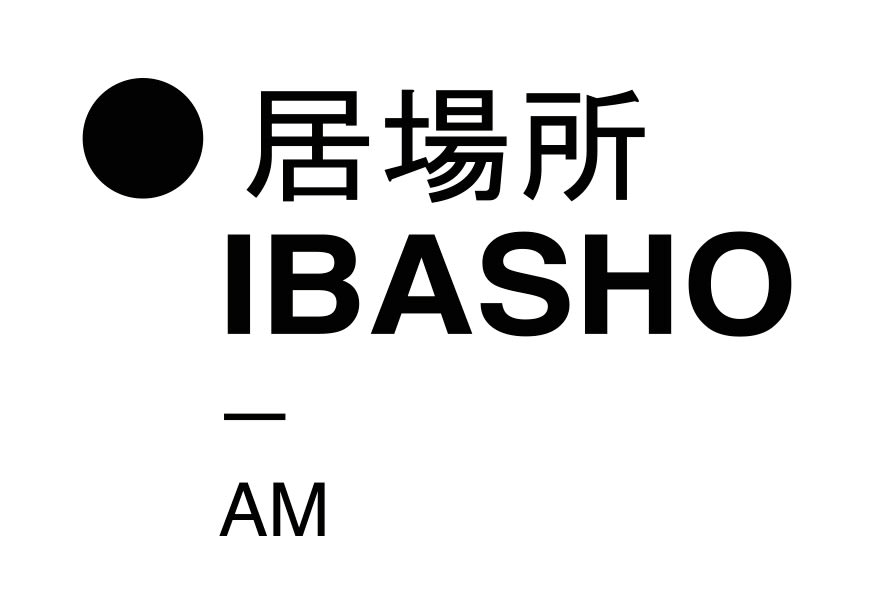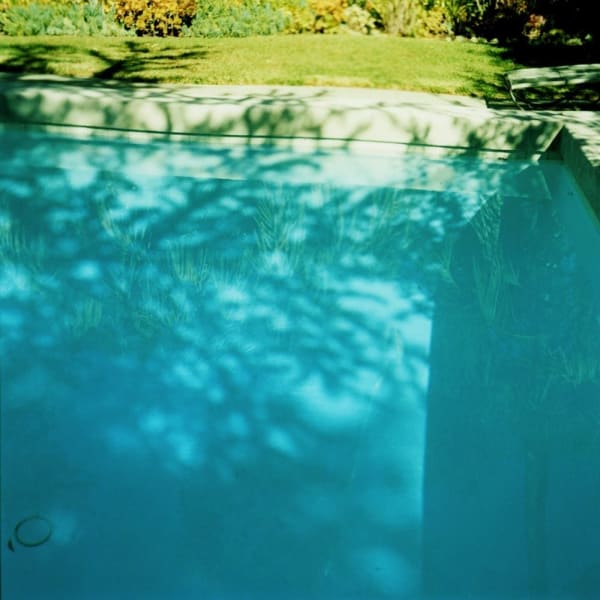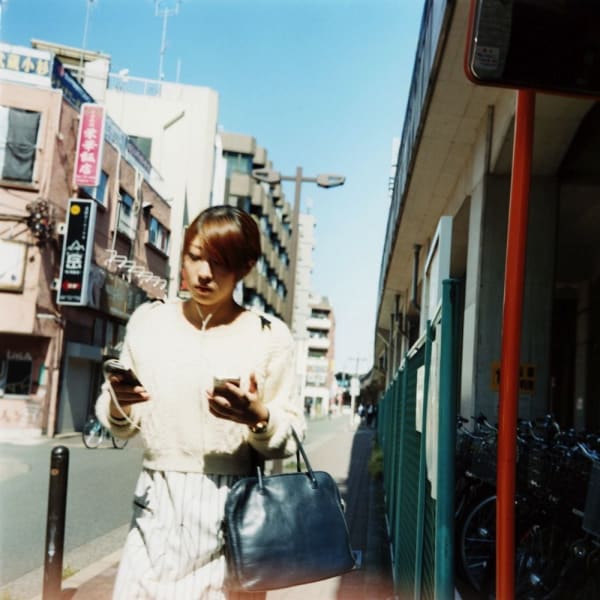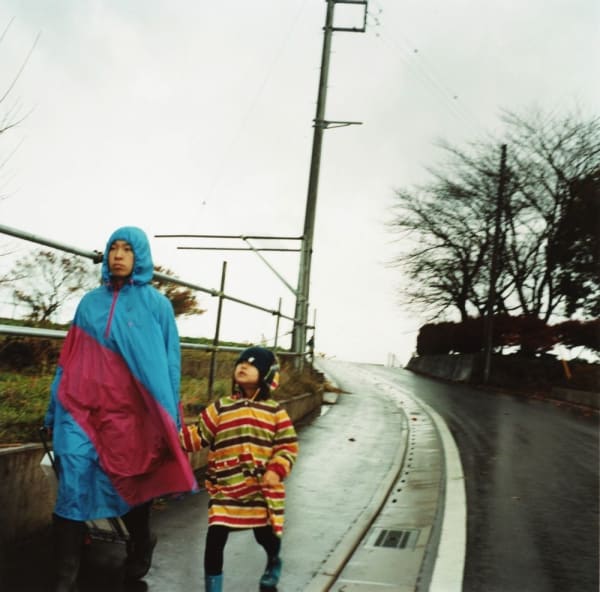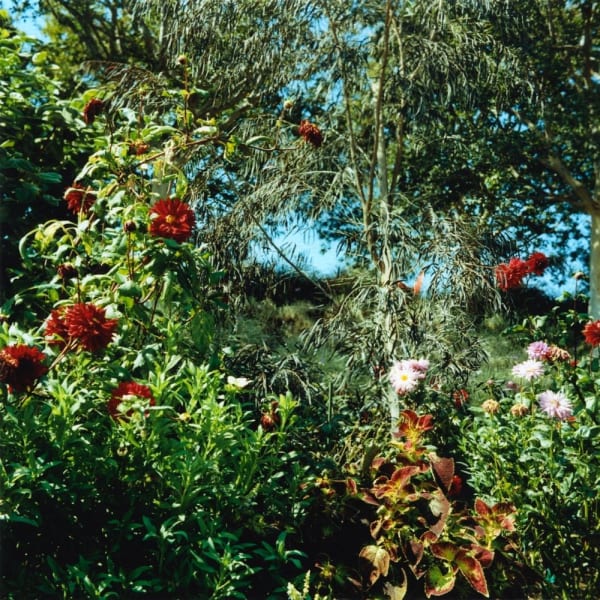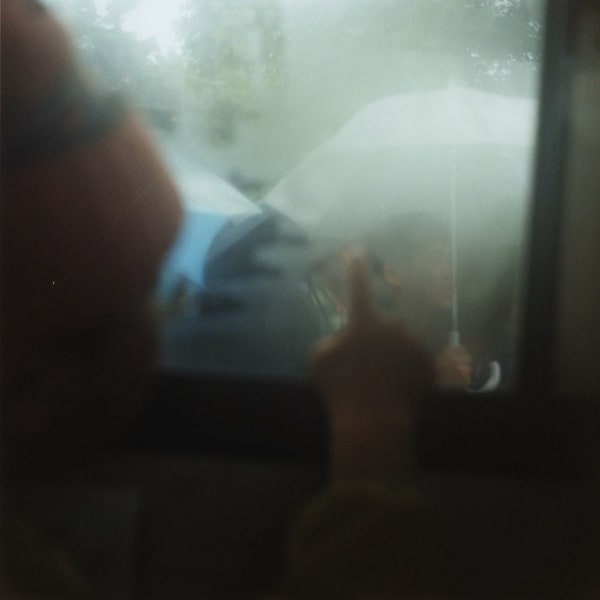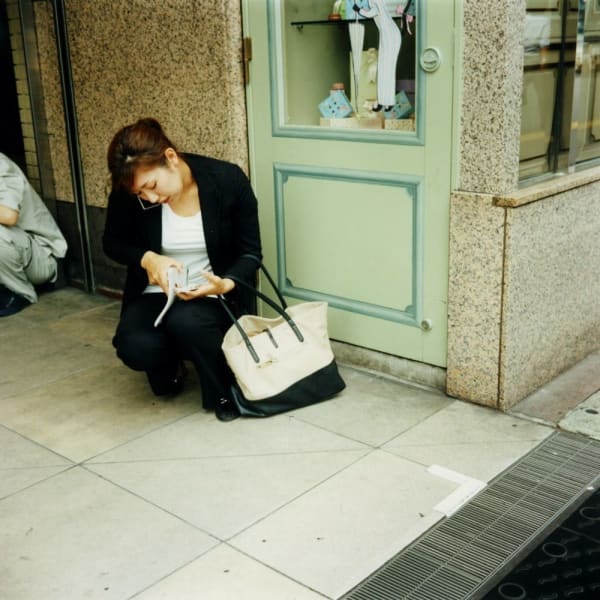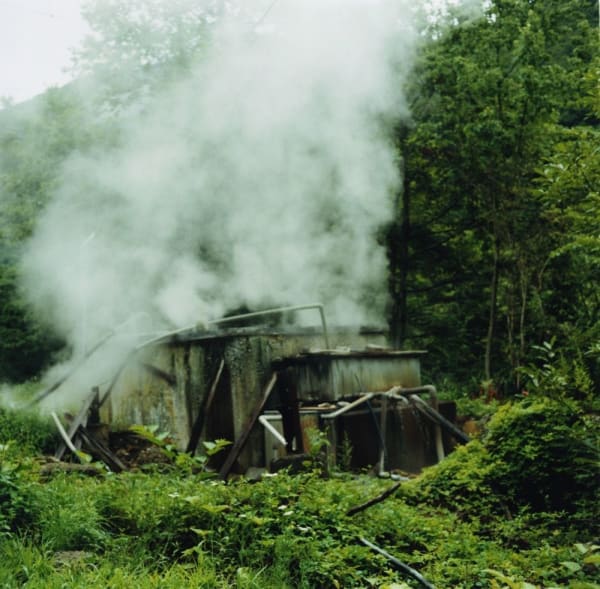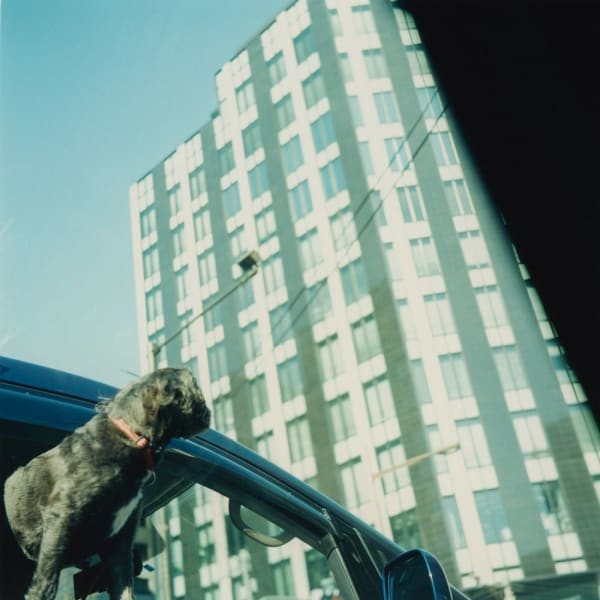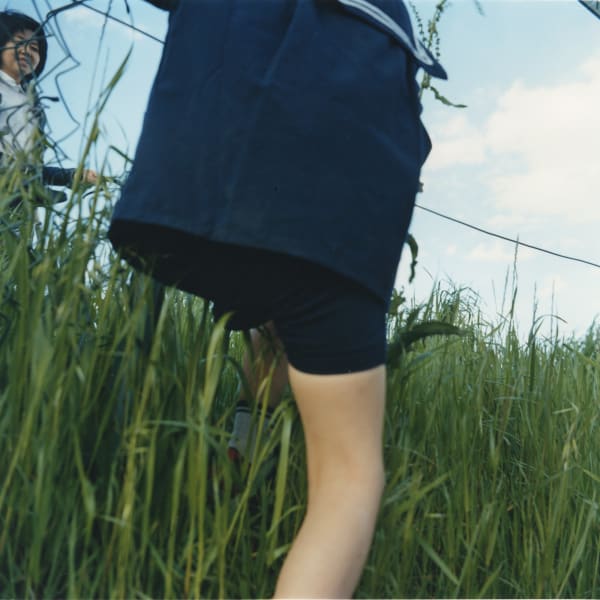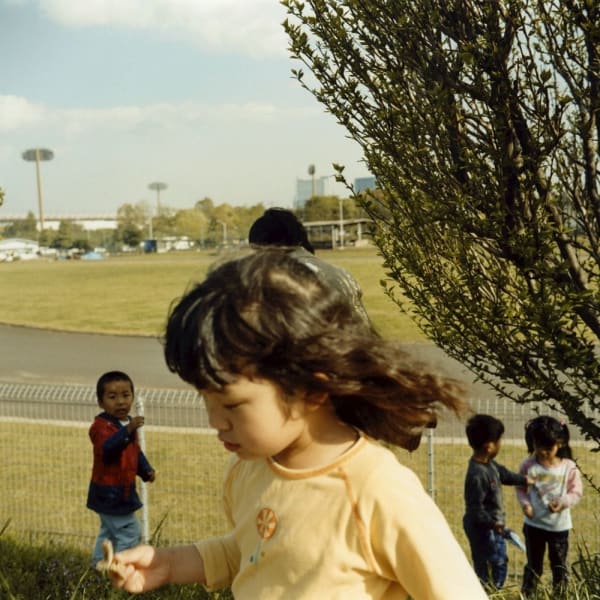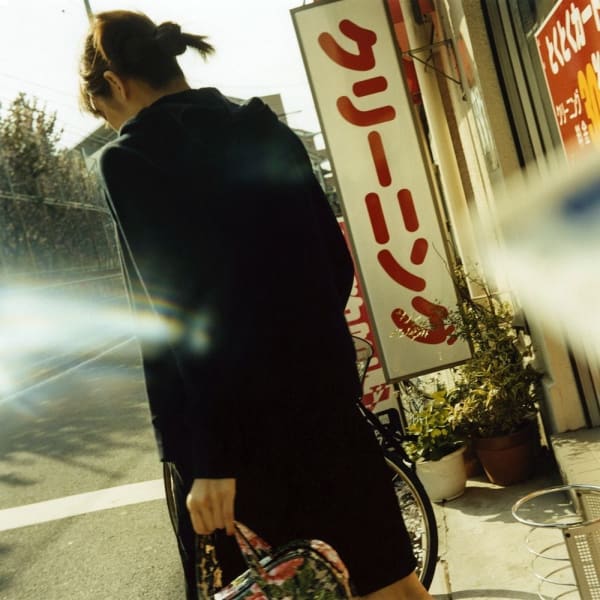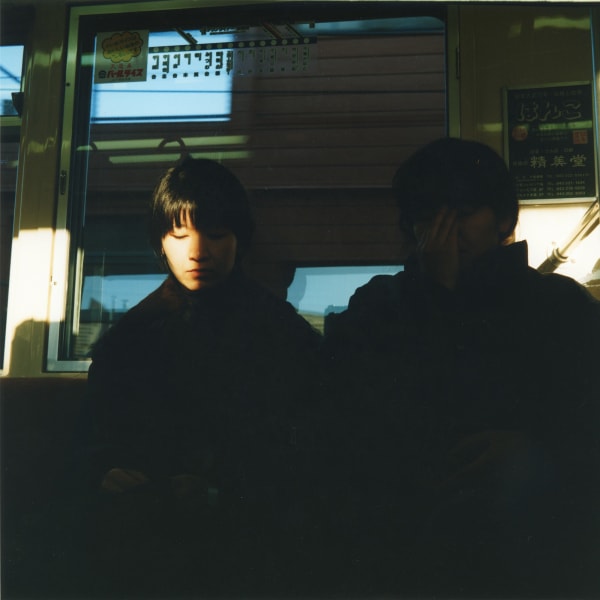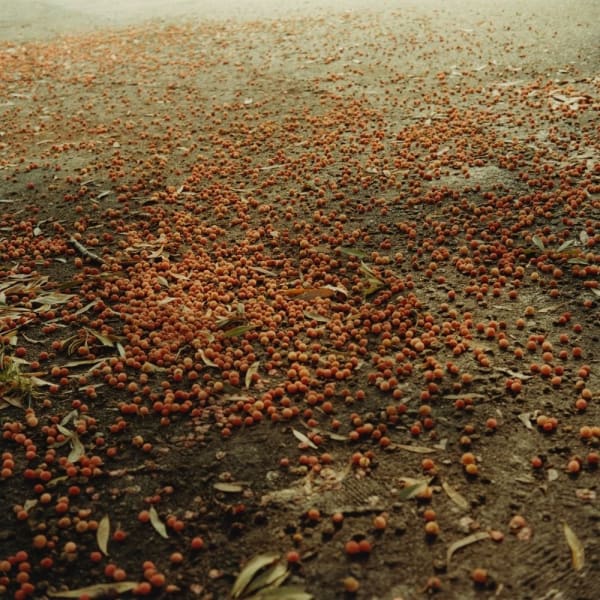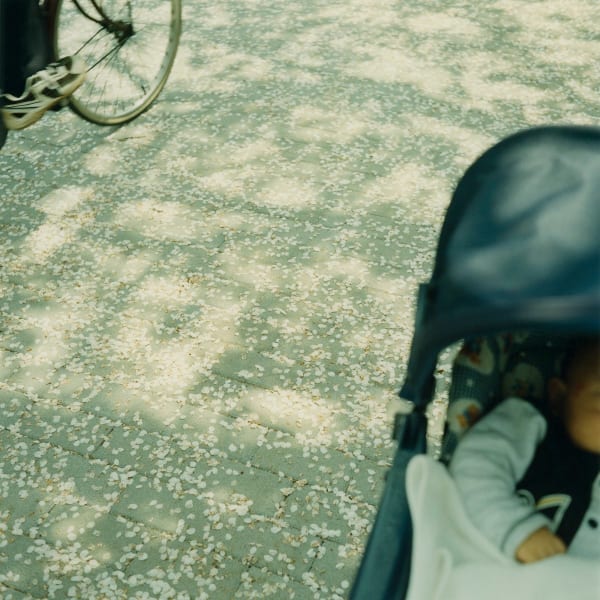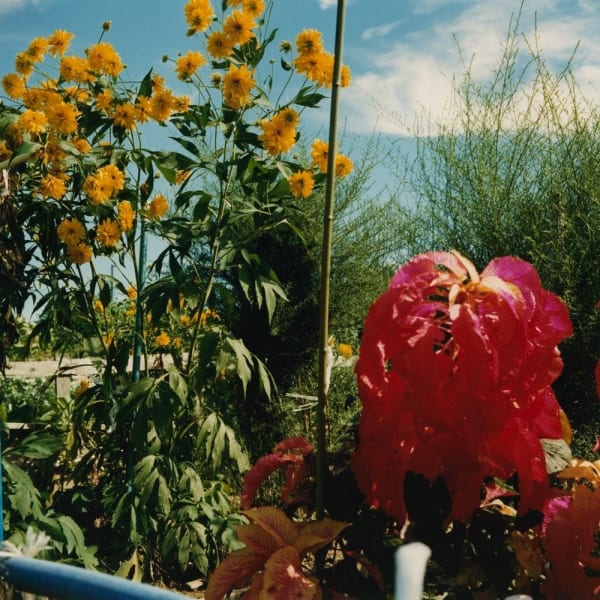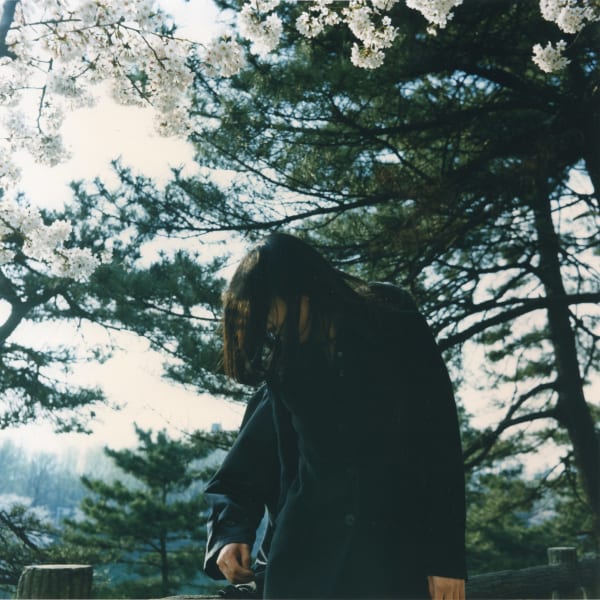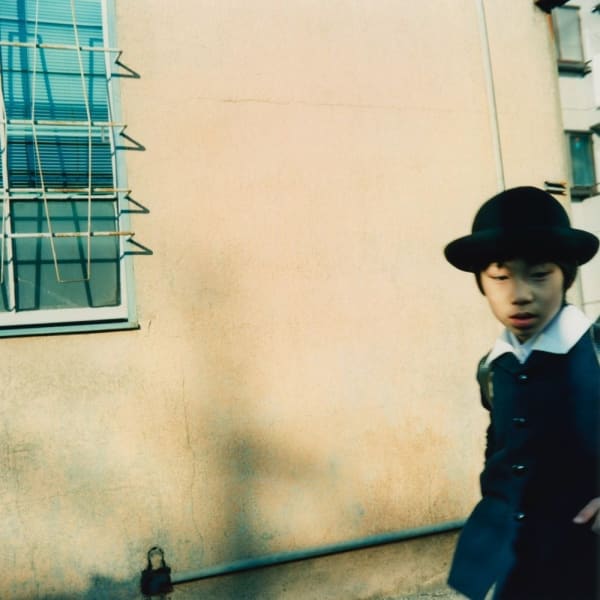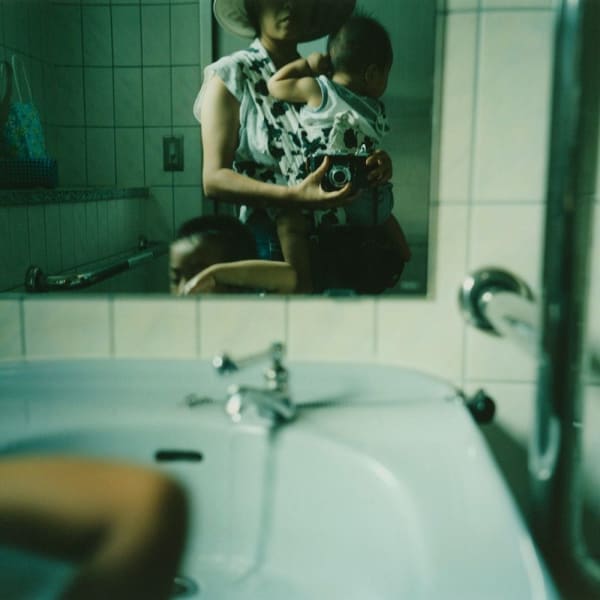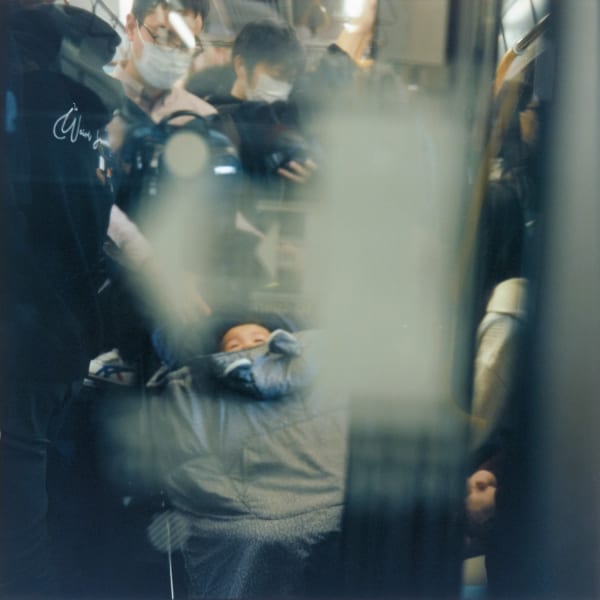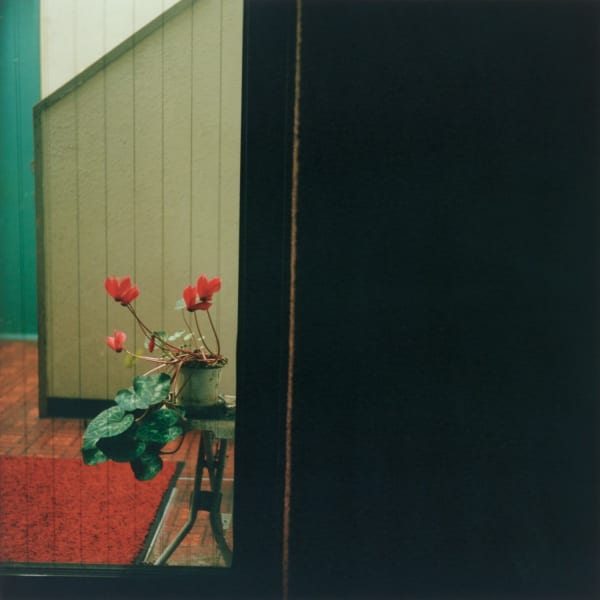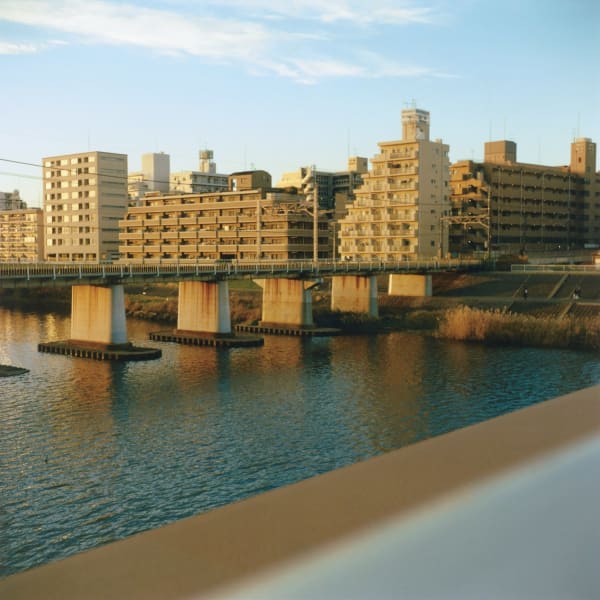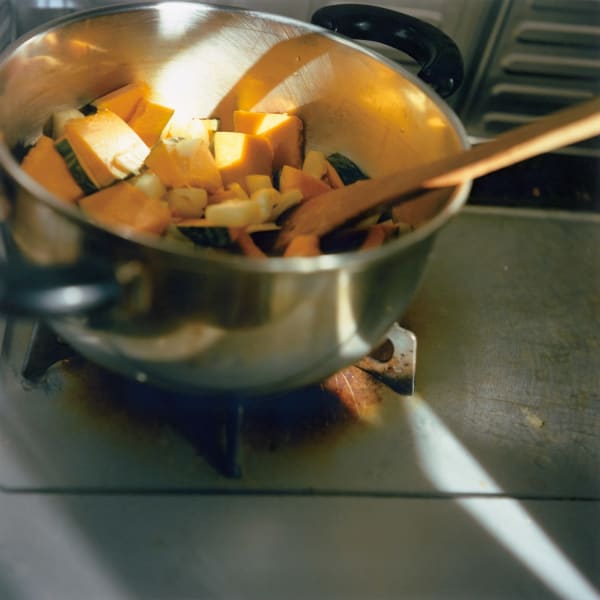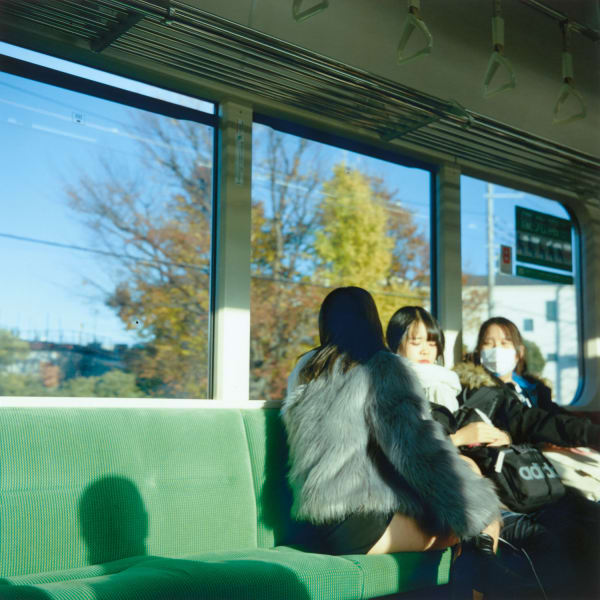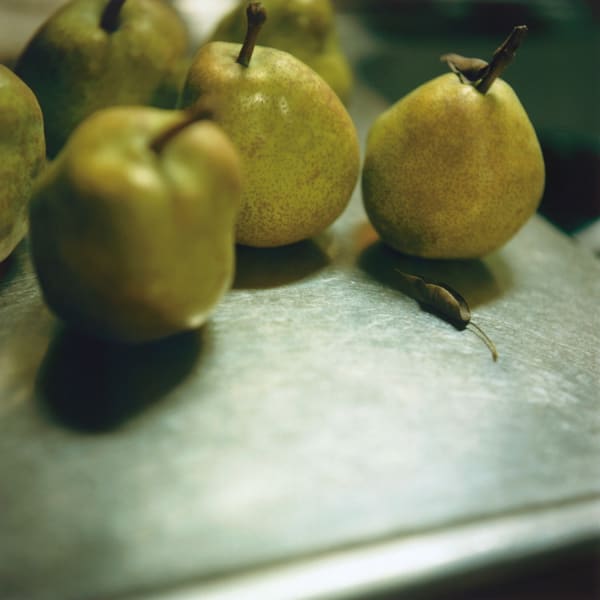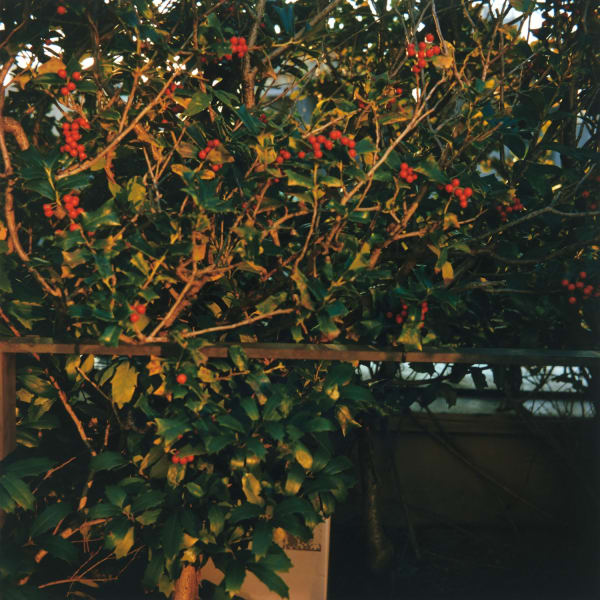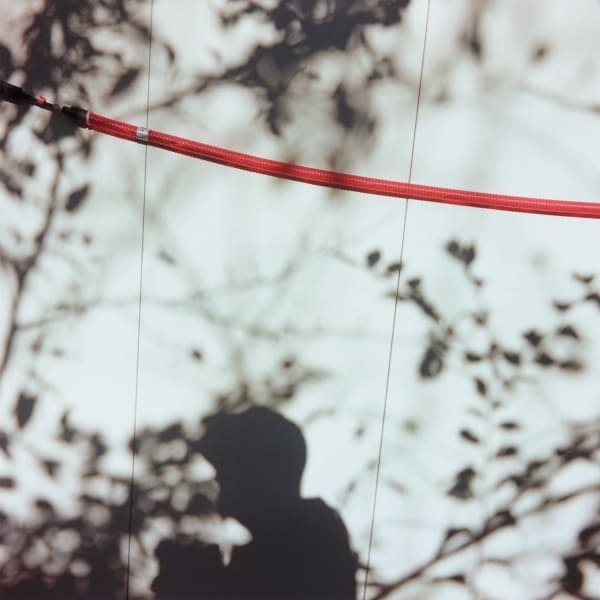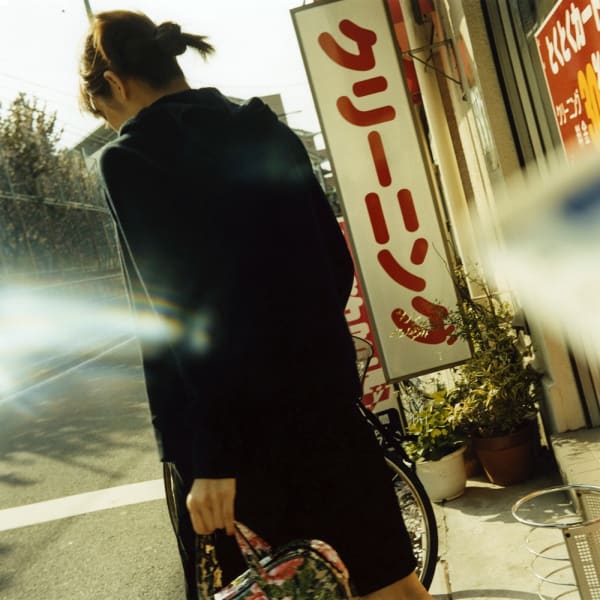Mikiko Hara
Mikiko Hara sees and photographs her subjects without looking at the image through the viewfinder. She uses a German-made Ikonta from the 1930s. Since she first encountered this classic camera in the mid 1990s, she has made the square-format snapshot into her own photographic style. The photographer always has this lightweight, easy to carry, and quiet camera with her in her bag as she walks the streets. She photographs the nonchalant figures of fleeting passersby, as well as the landscapes and material things that emerge and disappear before her eyes wherever she goes. In those places she has come upon by chance, she quietly releases the shutter. She gambles on the accumulation of chance that is the technique of the snapshot. Each of the moments that have been retained among the hordes of photographs resonates with the fragments of memory within the viewer, arousing feelings which precede words.
Mikko Hara was born in 1967 in Toyama Prefecture. She graduated in 1990 from Keio University's Faculty of Literature. In 1994, she graduated from Tokyo College of Photography where she actively pursued photography. She continued studying at Tokyo College of Photography as a research student and graduated in 1996. During the same year she had her first solo exhibition titled 'Is As It,' which was held in Tokyo. Since then, her works have been shown at numerous exhibitions in Japan and abroad. In 2005, she published a collection of her photographs titled 'Hysteric 13: Hara Mikiko'(Hysteric Glamour). In 2007, her first solo exhibition outside of Japan was held at Cohen Amador Gallery in New York. Her works are in the collection of the Bibliothèque nationale de France, Paris, the J. Paul Getty Museum, LA, and Fotomuseum Winterthur, Switzerland and San Francisco Museum of Modern Art (SFMoMA) among others.
In 2016 Hara won the 42nd Kumura Ihei Award with her book "Change".
-
 Untitled, 2014 from These are Days Dei (#075), 2014
Untitled, 2014 from These are Days Dei (#075), 2014 -
 Untitled, 2014 from These are Days Dei (#071), 2014
Untitled, 2014 from These are Days Dei (#071), 2014 -
 Untitled, 2014 from These are Days Dei (#067), 2014
Untitled, 2014 from These are Days Dei (#067), 2014 -
 Untitled, 2014 from These are Days Dei (#056), 2014
Untitled, 2014 from These are Days Dei (#056), 2014 -
 Untitled, 2014 from These are Days Dei (#052), 2014
Untitled, 2014 from These are Days Dei (#052), 2014 -
 Untitled, 2014 from These are Days (#105), 2014
Untitled, 2014 from These are Days (#105), 2014 -
 Untitled, 2014 from These are Days (#079), 2014
Untitled, 2014 from These are Days (#079), 2014 -
 Untitled, 2014 from These are Days (#076), 2014
Untitled, 2014 from These are Days (#076), 2014 -
 Untitled, 2014 from These are Days (#070), 2014
Untitled, 2014 from These are Days (#070), 2014 -
 Untitled, 2014 from These are Days (#066), 2014
Untitled, 2014 from These are Days (#066), 2014 -
 Untitled, 2014 from These are Days (#064), 2014
Untitled, 2014 from These are Days (#064), 2014 -
 Untitled, 2014 from These are Days (#061), 2014
Untitled, 2014 from These are Days (#061), 2014 -
 Untitled, 2014 from These are Days (#057), 2014
Untitled, 2014 from These are Days (#057), 2014 -
 Untitled, 2014 from These are Days (#051), 2014
Untitled, 2014 from These are Days (#051), 2014 -
 Untitled, 2013 from These are Days (#078), 2013
Untitled, 2013 from These are Days (#078), 2013 -
 Untitled, 2013 from These are Days (#077), 2013
Untitled, 2013 from These are Days (#077), 2013 -
 Untitled, 2013 from These are Days (#054), 2013
Untitled, 2013 from These are Days (#054), 2013 -
 Untitled, 2011 from These are Days (#068), 2011
Untitled, 2011 from These are Days (#068), 2011 -
 Untitled, 2011 from These are Days (#058), 2011
Untitled, 2011 from These are Days (#058), 2011 -
 Untitled, 2009 from Still (#142), 2009
Untitled, 2009 from Still (#142), 2009 -
 Untitled, 2009 from Still (#134), 2009
Untitled, 2009 from Still (#134), 2009 -
 Untitled, 2009 from Still (#115), 2009
Untitled, 2009 from Still (#115), 2009 -
 Untitled, 2009 from Still (#108), 2009
Untitled, 2009 from Still (#108), 2009 -
 Untitled, 2009 from Still (#096), 2009
Untitled, 2009 from Still (#096), 2009 -
 Untitled, 2009 from Still (#074), 2009
Untitled, 2009 from Still (#074), 2009 -
 Untitled, 2008 from Here and There Behind the Clouds (#123), 2008
Untitled, 2008 from Here and There Behind the Clouds (#123), 2008 -
 Untitled, 2006 from These are Days (#055), 2006
Untitled, 2006 from These are Days (#055), 2006 -
 Untitled, 2006 from Tentacles of Glance (#119), 2006
Untitled, 2006 from Tentacles of Glance (#119), 2006 -
 Untitled, 2006 from Humoresque (#146), 2006
Untitled, 2006 from Humoresque (#146), 2006 -
 Untitled, 2006 from Humoresque (#132), 2006
Untitled, 2006 from Humoresque (#132), 2006 -
 Untitled, 2006 from Humoresque (#113), 2006
Untitled, 2006 from Humoresque (#113), 2006 -
 Untitled, 2006 from Humoresque (#111), 2006
Untitled, 2006 from Humoresque (#111), 2006 -
 Untitled, 2006 from "Humoresque'' (#063), 2006
Untitled, 2006 from "Humoresque'' (#063), 2006 -
 Untitled, 2005 from These are Days (#060), 2005
Untitled, 2005 from These are Days (#060), 2005 -
 Untitled, 2005 from Obsessive Words (#145), 2005
Untitled, 2005 from Obsessive Words (#145), 2005 -
 Untitled, 2005 from Obsessive Words (#128), 2005
Untitled, 2005 from Obsessive Words (#128), 2005 -
 Untitled, 2005 from Obsessive Words (#106), 2005
Untitled, 2005 from Obsessive Words (#106), 2005 -
 Untitled, 2004 from Fringes of Articulation (#130), 2004
Untitled, 2004 from Fringes of Articulation (#130), 2004 -
 Untitled, 2004 from Fringes of Articulation (#129), 2004
Untitled, 2004 from Fringes of Articulation (#129), 2004 -
 Untitled, 2004 from Fringes of Articulation (#127), 2004
Untitled, 2004 from Fringes of Articulation (#127), 2004 -
 Untitled, 2004 from Fringes of Articulation (#126), 2004
Untitled, 2004 from Fringes of Articulation (#126), 2004 -
 Untitled, 2004 from Fringes of Articulation (#121), 2004
Untitled, 2004 from Fringes of Articulation (#121), 2004 -
 Untitled, 2004 from Fringes of Articulation (#118), 2004
Untitled, 2004 from Fringes of Articulation (#118), 2004 -
 Untitled, 2004 from Fringes of Articulation (#110), 2004
Untitled, 2004 from Fringes of Articulation (#110), 2004 -
 Untitled, 2004 from Fringes of Articulation (#109), 2004
Untitled, 2004 from Fringes of Articulation (#109), 2004 -
 Untitled, 2001 from Procedures of Manufacturing a Void (#137), 2001
Untitled, 2001 from Procedures of Manufacturing a Void (#137), 2001 -
 Untitled, 2001 from Procedures of Manufacturing a Void (#136), 2001
Untitled, 2001 from Procedures of Manufacturing a Void (#136), 2001 -
 Untitled, 2001 from Procedures of Manufacturing a Void (#133), 2001
Untitled, 2001 from Procedures of Manufacturing a Void (#133), 2001 -
 Untitled, 2001 from Procedures of Manufacturing a Void (#131), 2001
Untitled, 2001 from Procedures of Manufacturing a Void (#131), 2001 -
 Untitled, 2001 from Procedures of Manufacturing a Void (#125), 2001
Untitled, 2001 from Procedures of Manufacturing a Void (#125), 2001 -
 Untitled, 2001 from Procedures of Manufacturing a Void (#122), 2001
Untitled, 2001 from Procedures of Manufacturing a Void (#122), 2001 -
 Untitled, 2001 from Procedures of Manufacturing a Void (#117), 2001
Untitled, 2001 from Procedures of Manufacturing a Void (#117), 2001 -
 Untitled, 2001 from Procedures of Manufacturing a Void (#114), 2001
Untitled, 2001 from Procedures of Manufacturing a Void (#114), 2001 -
 Untitled, 1999 from Primary Speaking (#047), 1999
Untitled, 1999 from Primary Speaking (#047), 1999 -
 Untitled, 1999 from Primary Speaking (#019), 1999
Untitled, 1999 from Primary Speaking (#019), 1999 -
 Untitled, 1999 from Primary Speaking (#001), 1999
Untitled, 1999 from Primary Speaking (#001), 1999 -
 Untitled, 1998 from Agnus Dei (#144), 1998
Untitled, 1998 from Agnus Dei (#144), 1998 -
 Untitled, 1998 from Agnus Dei (#138), 1998
Untitled, 1998 from Agnus Dei (#138), 1998 -
 Untitled, 1998 from Agnus Dei (#124), 1998
Untitled, 1998 from Agnus Dei (#124), 1998 -
 Untitled, 1998 from Agnus Dei (#029), 1998
Untitled, 1998 from Agnus Dei (#029), 1998 -
 Untitled, 1998 from Agnus Dei (#018), 1998
Untitled, 1998 from Agnus Dei (#018), 1998 -
 Untitled, 1998 from Agnus Dei (#005), 1998
Untitled, 1998 from Agnus Dei (#005), 1998 -
 Untitled, 1996 from Is As It (#107), 1996
Untitled, 1996 from Is As It (#107), 1996 -
 Untitled, 1996 from Is As It (#021), 1996
Untitled, 1996 from Is As It (#021), 1996 -
 Untitled, 1996 from Is As It (#017), 1996
Untitled, 1996 from Is As It (#017), 1996 -
 Untitled, 2014 from These are Days (#062)
Untitled, 2014 from These are Days (#062) -
 Untitled, 2006 from Tentacles of Glance (#120)
Untitled, 2006 from Tentacles of Glance (#120) -
 Untitled, 2006 from Humoresque (#135)
Untitled, 2006 from Humoresque (#135) -
 Untitled, 2006 from Humoresque (#116)
Untitled, 2006 from Humoresque (#116) -
 Untitled from Medeia (#303)
Untitled from Medeia (#303) -
 Untitled from Medeia (#302)
Untitled from Medeia (#302) -
 Untitled from Medeia (#301)
Untitled from Medeia (#301) -
 Untitled from Medeia (#300)
Untitled from Medeia (#300) -
 Untitled from Medeia (#299)
Untitled from Medeia (#299) -
 Untitled from Medeia (#298)
Untitled from Medeia (#298) -
 Untitled from Medeia (#297)
Untitled from Medeia (#297) -
 Untitled from Medeia (#295)
Untitled from Medeia (#295) -
 Untitled from Medeia (#294)
Untitled from Medeia (#294) -
 Untitled from Medeia (#293)
Untitled from Medeia (#293) -
 Untitled from Medeia (#292)
Untitled from Medeia (#292) -
 Untitled from Medeia (#291)
Untitled from Medeia (#291) -
 Untitled from Medeia (#289)
Untitled from Medeia (#289) -
 Untitled from Medeia (#288)
Untitled from Medeia (#288) -
 Untitled from Medeia (#287)
Untitled from Medeia (#287) -
 Untitled from Medeia (#286)
Untitled from Medeia (#286) -
 Untitled from Medeia (#285)
Untitled from Medeia (#285) -
 Untitled from Medeia (#284)
Untitled from Medeia (#284) -
 Untitled from Medeia (#283)
Untitled from Medeia (#283) -
 Untitled from Medeia (#282)
Untitled from Medeia (#282) -
 Untitled from Medeia (#280)
Untitled from Medeia (#280) -
 Untitled from Medeia (#279)
Untitled from Medeia (#279) -
 Untitled from Medeia (#278)
Untitled from Medeia (#278) -
 Untitled from Medeia (#277)
Untitled from Medeia (#277) -
 Untitled from Medeia (#276)
Untitled from Medeia (#276) -
 Untitled from Medeia (#275)
Untitled from Medeia (#275)
-

I’m So Happy You Are Here: Japanese Women Photographers from the 1950s to Now
2024hardcover, 440 pagesRead more
Publisher: Aperture
Dimensions: 285 × 215 mm -

Looking Back: 10 Years of IBASHO
Exhibition catalogue various artist, 2025softcoverRead more
Publisher: IBASHO
Dimensions: 230 x 240 mm -

MA CAM' - various Japanese photographers
Valérie Douniaux, 2013softcover, 134 pagesRead more
Publisher: iKi édition
Dimensions: 150 x 150 mm
-

#70 Looking back: 10 Years of IBASHO
23 Mar - 18 May 2025We're excited to celebrate a big milestone at IBASHO: 10 years of sharing the beauty of Japanese photography. To mark this special moment, we're hosting a group exhibition “Looking Back:...Read more -

#53 Toshi-City
Summer group exhibition 25 Jun - 28 Aug 2022For the 2022 Summer group exhibition IBASHO has chosen the city ('Toshi' in Japanese) as a theme. Who thinks of Japanese cities, thinks of Tokyo first. This hypermodern city in...Read more -

#41 The Wind Cannot Be Named - Mikiko Hara
10 Sep - 18 Oct 2020IBASHO is proud to present a solo exhibition of Mikiko Hara (1967, Toyama Prefecture), a renowned Japanese contemporary photographer, known for her unique snapshot works in colour. Most of Hara’s...Read more -

#21 Female Force from Japan
1 Jun - 3 Sep 2017EXHIBITION EXTENDED: OPEN BY APPOINTMENT DURING SUMMER! Since the opening of IBASHO in March 2015 we have been exposed to so much photographic talent coming from Japan, that we have...Read more
